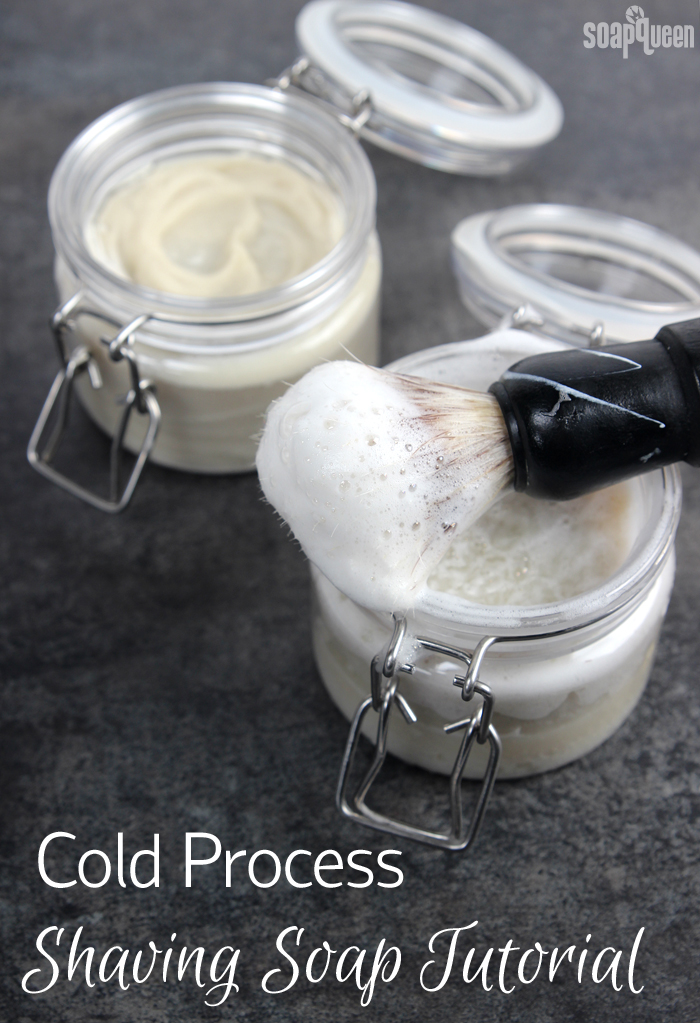
This Cold Process Shaving Soap recipe creates thick and luxurious bubbles. The key is a combination of castor oil, combined with skin-loving butters like cocoa and avocado. It’s scented with a combination of spearmint and patchouli essential oils for a refreshing, yet earthy blend. Bentonite clay is added to give the soap “slip,” which helps prevent razor burn.
I poured this soap into short bail jars, which are the perfect size to use with the shaving brush. This recipe does contain a 15% water discount to help the soap cure while in the jars. If you prefer, you can use a different mold or container. But, I don’t recommend skipping on a shaving brush. It’s crucial for creating a thick lather.
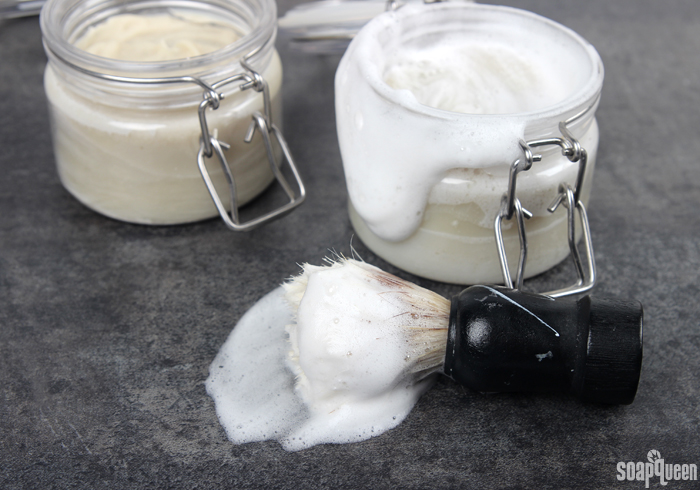
What You’ll Need:
Four Short 8 oz. Bail Jars
2.3 oz. Avocado Butter
3.5 oz. Castor Oil
1.2 oz. Cocoa Butter
4.6 oz. Coconut Oil
4.6 oz. Palm Oil
6.9 oz. Rice Bran Oil
3.2 oz. Sodium Hydroxide Lye
6.5 oz. Distilled Water (15% water discount)
1 tsp. Sodium Lactate
0.4 oz. Spearmint Essential Oil
0.6 oz. Patchouli Essential Oil
1 Tbs. Bentonite Clay
Optional: Shaving Brush

Click here to add everything you need for this project to your Bramble Berry shopping cart!
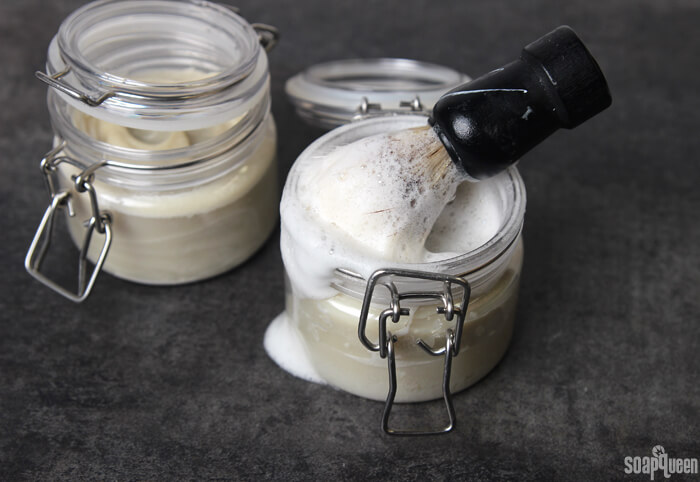
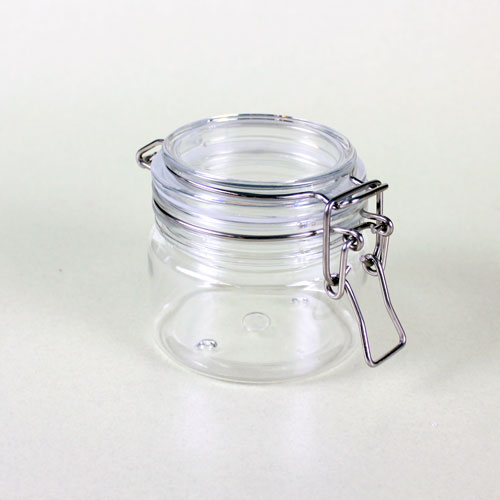
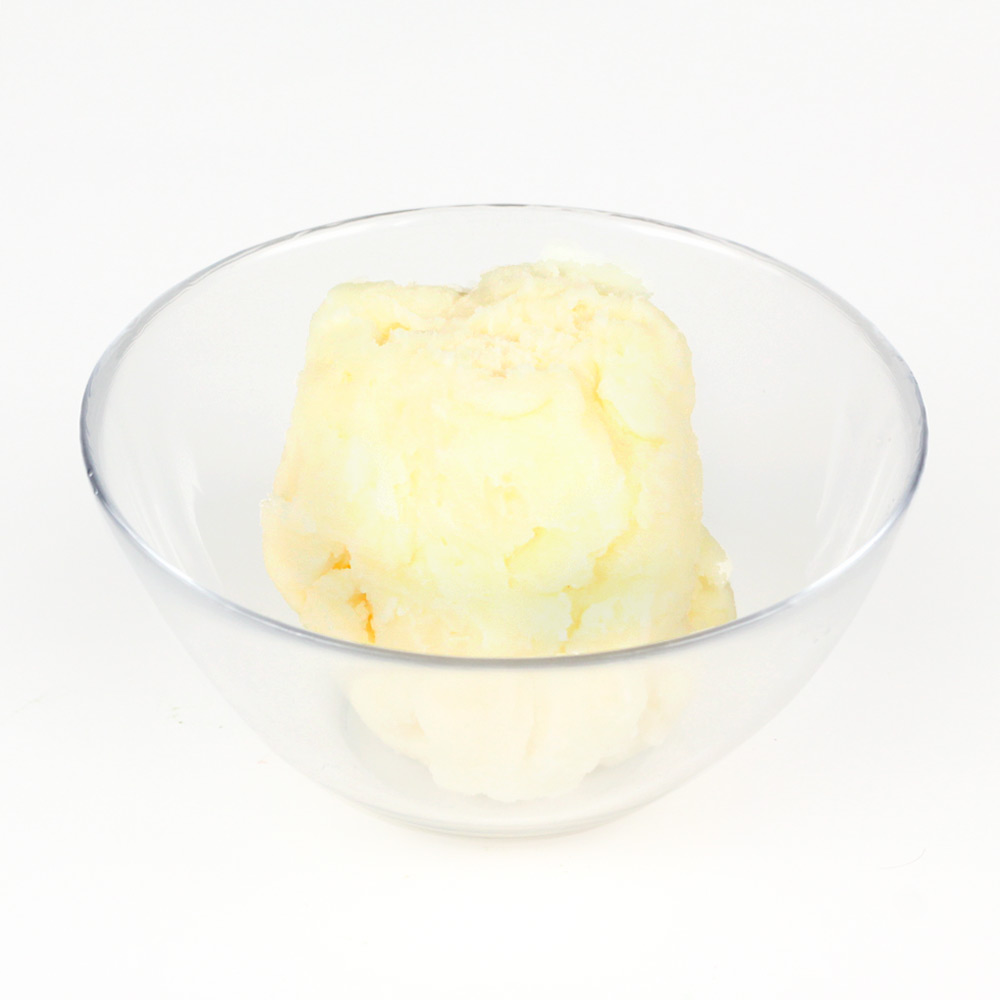

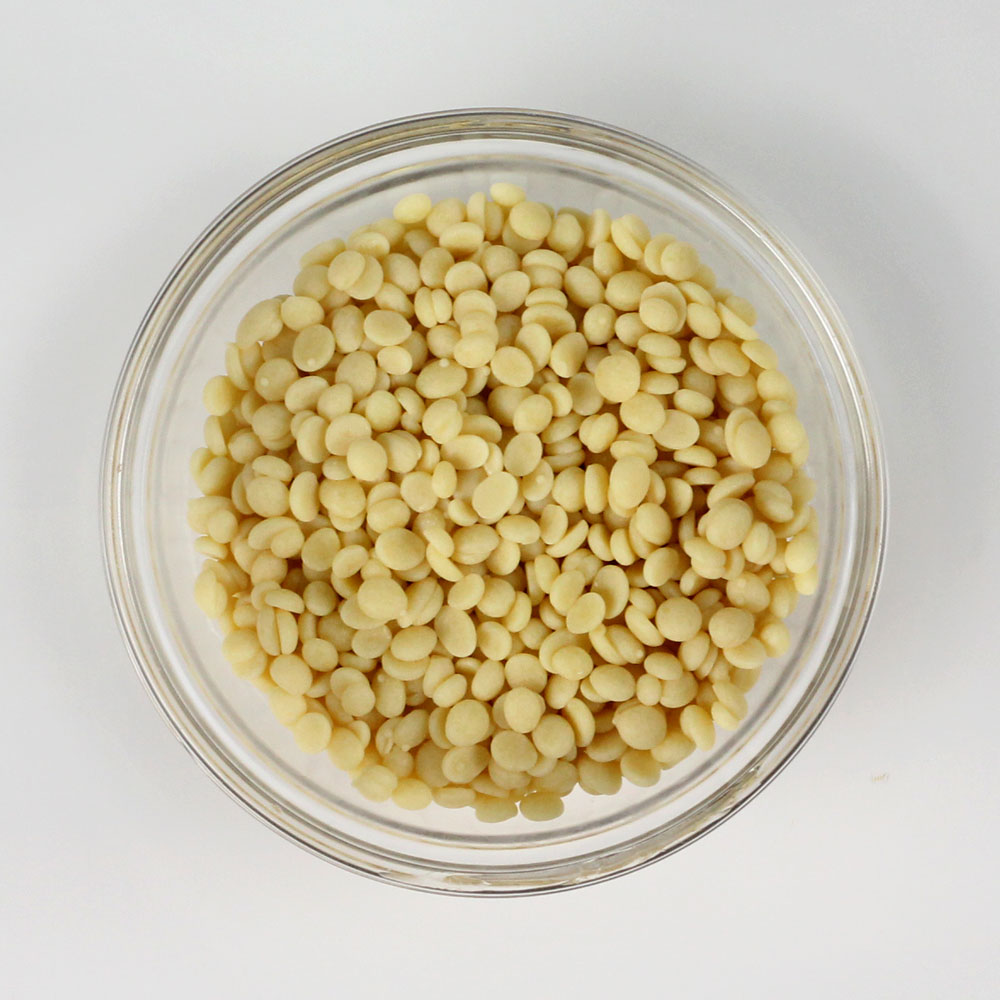
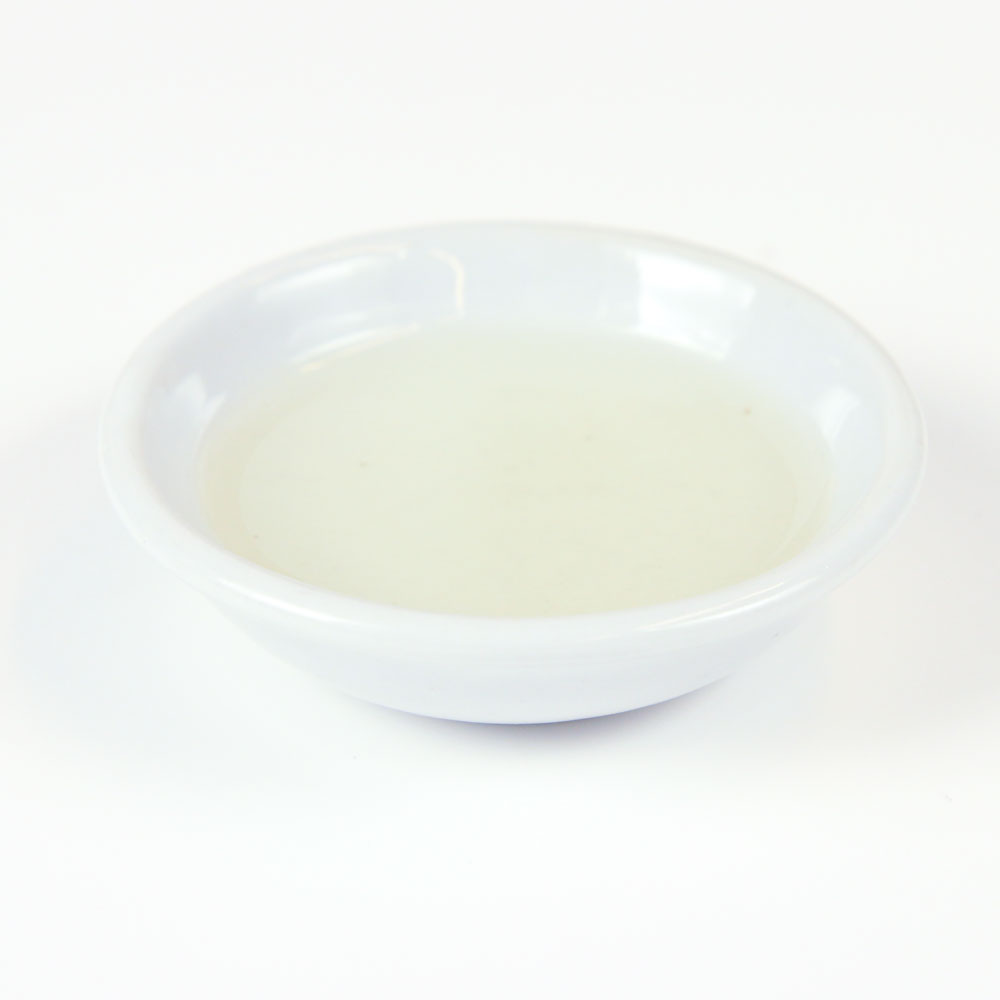
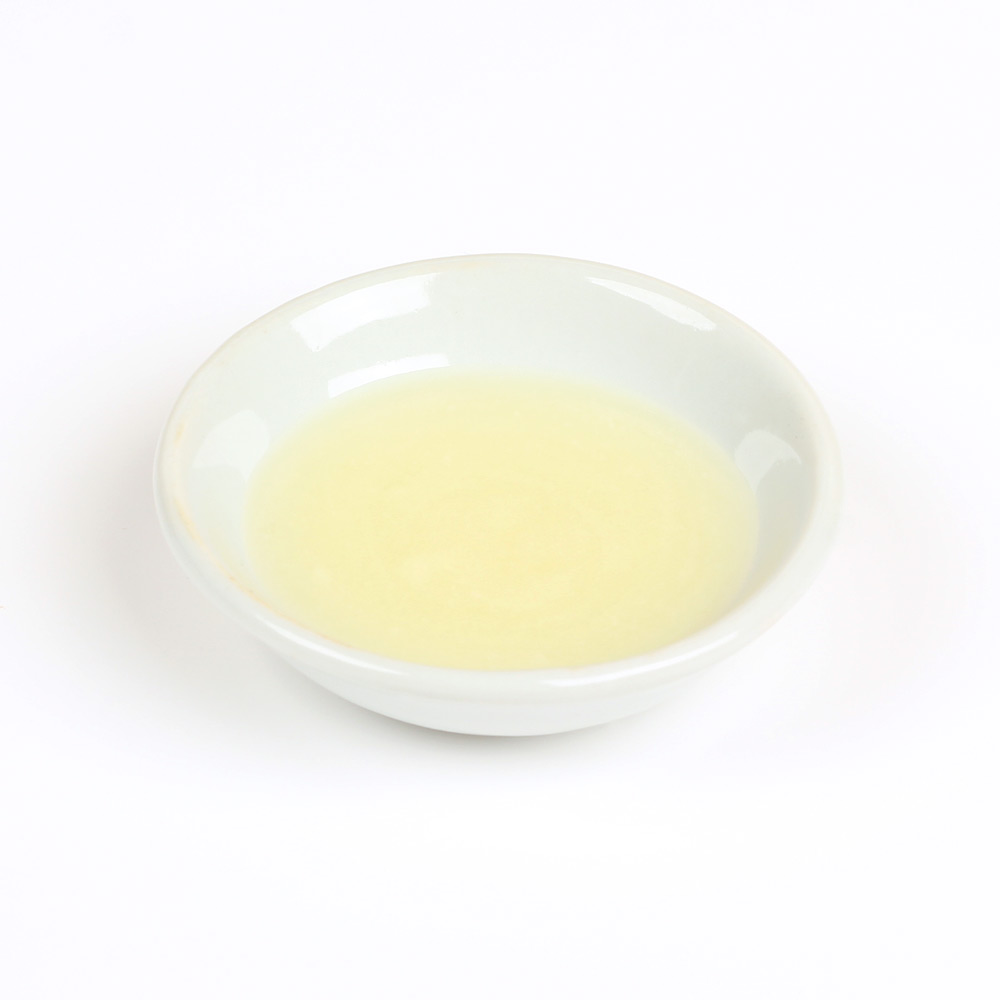

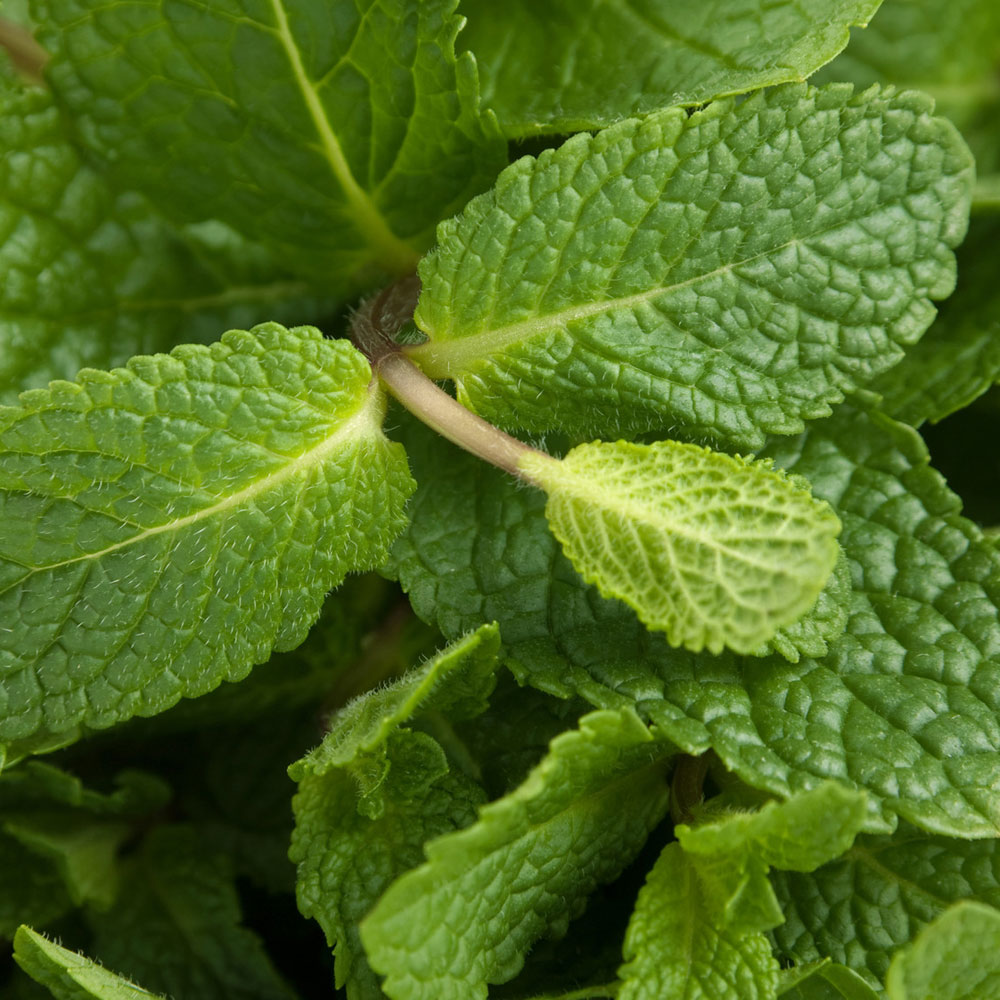
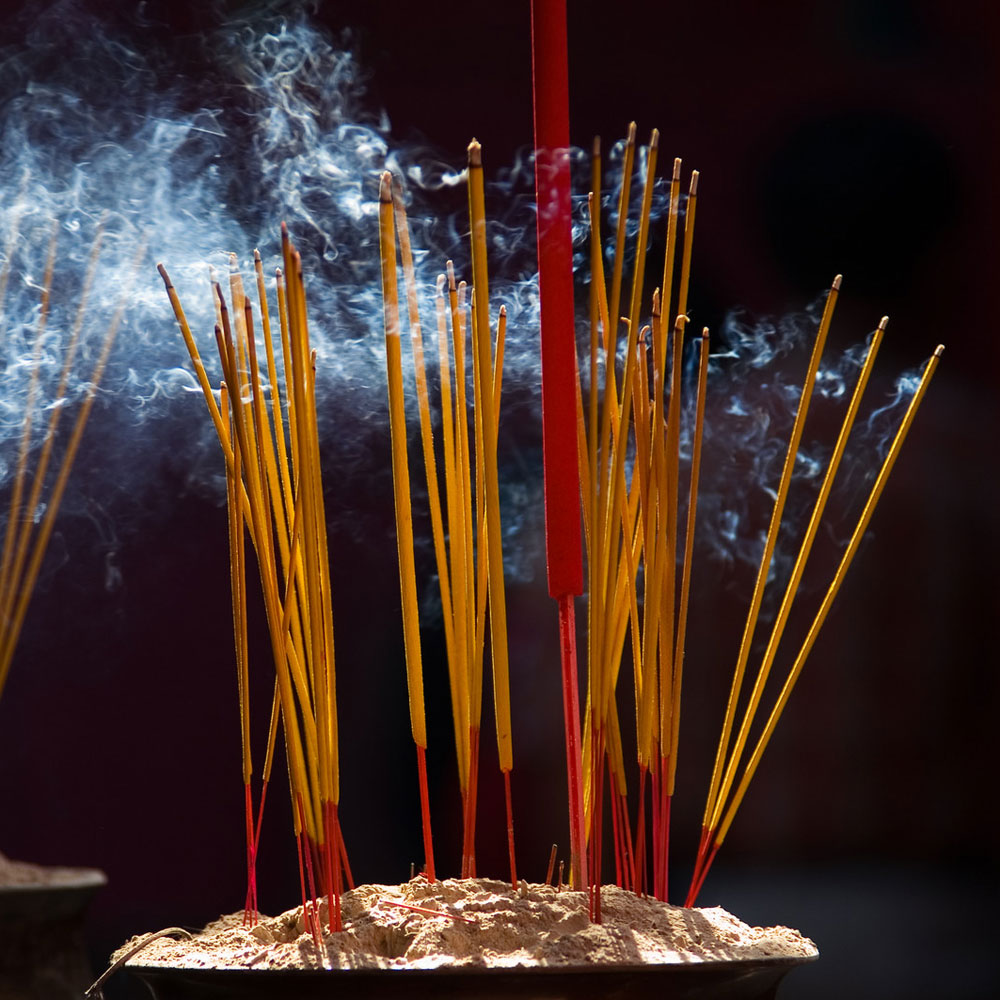



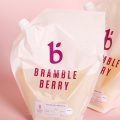
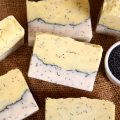

I would like to try to make this shaving soap. I keep hearing that Bentonite clay is the best clay to use if you want to create a lot of slip. However, I have also heard that Bentonite clay can be very drying to the skin. I was wondering if that is the case, and if it is, would you please recommend an alternative milder clay that I can use that will provide a lot of slip?
Bentonite clay has a silky feeling that’s great for shaving soap. Like all clays, it does absorb moisture so it can be drying in larger quantities. We found the 1 tablespoon of bentonite in this recipe is enough to add slip without feeling drying. A good place to start is about 1 teaspoon per pound.
Hi. I was just wondering if there is something I can replace the avocado butter with that would have similar properties? Should I use avocado oil?
You can use another soft butter like coffee or orange butter. You can also use shea butter, just keep in mind the soap will have a firmer texture.
Orange butter: https://www.brambleberry.com/Orange-Butter-P6743.aspx
Shea butter: https://www.brambleberry.com/Shea-Butter-P3220.aspx
Remember to run your recipe through the Lye Calculator after any substitutions: https://www.brambleberry.com/Pages/Lye-Calculator.aspx
This post on substituting oil has more information as well: http://www.soapqueen.com/bath-and-body-tutorials/tips-and-tricks/how-to-substitute-oil-in-cold-process-recipes/
I have a question about the slip. Can I add extra clay to get even more slip?
You can add more clay if you like. Have you made this recipe before? If not, you may try a small test batch to see what you think. The 1 Tbsp. of clay in there now goes a long way.
Hey, I have made this soap a few times. I was finally able to use it the other day and the lather is just not there. By the time I put the shave soap on and go to shave it’s like the soap disappears. Is there something I can do to make the lather thinker?
We found this soap had the best lather after a few weeks cure time. We also found a shaving brush is the best way to work up a more stable lather.
-Amanda with Bramble Berry
When I run this through the lye calculator, I don’t get the same lye/water ratios. Does this have a lye discount or water discount built in? If so, can you share those as well? Thanks so much!
Sorry for leaving that information out, it does have a 15% water discount. Thank you Sherry, we updated the blog post. 🙂
-Kelsey with Bramble Berry
How do you put in a water discount on Soap calc? It is set at 38%, so do I subtract 15 from that so it is 23% water as percentage of oils? It’s not a biggie since I am making the same amount as the recipe; however I am using shea butter instead of Avocado butter and want to make sure everything is OK. If making that sub (shea for avocado) isn’t a big deal, I don’t need the soap calc, but….I’m confused..Thx for any help you can give me.
We don’t work with that calculator so I’m not entirely sure. You can do it manually though – for a 15% water discount, multiply your water amount by .85 (85%). That will give you the water amount to use.
Learn more about water discounting here: http://www.soapqueen.com/bath-and-body-tutorials/tips-and-tricks/water-discounting-cold-process-soap-how-why/
You can also use our Lye Calculator to find the original water amount: https://www.brambleberry.com/Pages/Lye-Calculator.aspx
-Kelsey with Bramble Berry
What can I use instead of palm oil?
Palm oil adds some great firmness to your soap, and there is no direct replacement for it. You can add certain oils and butters to help firm your soap up though. For instance, adding a hard butter, like cocoa butter up to 15%, can harden the bars. You can also add coconut oil or tallow up to 33%.
Read more about common oils and what properties they add to soap here: http://www.soapqueen.com/bath-and-body-tutorials/tips-and-tricks/free-beginners-guide-to-soapmaking-common-soapmaking-oils/
This post on substituting oils has some great information too: http://www.soapqueen.com/bath-and-body-tutorials/tips-and-tricks/how-to-substitute-oil-in-cold-process-recipes/
Sodium lactate is helpful as well. It helps the bars unmold more quickly. You can add 1 tsp. of sodium lactate per pound of oils to your cooled lye water. Read more in the Sunday Night Spotlight: Sodium Lactate: http://www.soapqueen.com/bramble-berry-news/sunday-night-spotlight-sodium-lactate/
-Kelsey with Bramble Berry
You can use lard instead of palm oil. The have the same sap value and properties.
Could this be poured directly into mugs?
Yes, that would work just fine, and it would be a great idea for a gift.
-Kelsey with Bramble Berry
Can I use zeolite clay instead of bentonite clay?
You can. You can prep it the same way as the bentonite clay, then add it 1 dispersed teaspoon at a time until you get the color or consistency you’re looking for.
-Kelsey with Bramble Berry
Green zeolite clay: https://www.brambleberry.com/Green-Zeolite-Clay-P4960.aspx
Can I use this recipe with silicone puck molds?
You can, that will work just fine. Once the soap is hard you can unmold it and let it cure for 4-6 weeks. Then, you can package the soap as is or put it in a cup or container.
-Kelsey with Bramble Berry
Ok thanks! I am also wondering if the recipe listed above with make 12 molds or does it only make 6?
This recipe weighs 32.8 ounces (about 2 pounds). To find out how many bars it makes, divide 32.8 by the weight each cavity holds. So, if your mold has 4 oz. cavities, it will make about 8 bars.
-Kelsey with Bramble Berry
Could the distilled water be replaced with beer? Would I need to make any adjustments? My friend loves beer and shaving soap so I wanted to combine the two. Thanks so much!
Absolutely, beer will help boost the lather even more in this recipe. It does need to be boiled and cooled before adding the lye. Learn how to work with beer in this post: https://www.soapqueen.com/bath-and-body-tutorials/tips-and-tricks/how-to-use-alcoholic-beverages-in-cold-process-soap/
-Kelsey with Bramble Berry
Is the sodium lactate absolutely necessary?
It is optional. Sodium lactate helps the bars harden more quickly, so without it they will just be a softer for another day or two.
Read more about sodium lactate here: http://www.soapqueen.com/bramble-berry-news/sunday-night-spotlight-sodium-lactate/
-Kelsey with Bramble Berry
Can these grow mold? I made it several months ago and it was sitting in my workshop which is not air conditioned. There are white patches that look very much like mold now ???😖
Soap has a pH level that doesn’t allow mold to grow, so I’m thinking the white spots may be something else. Do they look ashy?
-Kelsey with Bramble Berry
Hi Kelsey,
I will be making these in a Pringle can to fit in my shaving soap bowls.
Will this shaving soap still produce lather if I sub the Shea butter for the Avocado, Mango butter instead of cocoa butter and Sweet Almond oil for the Rice Bran Oil??
Great tutorial and thanks if you can answer my questions.
Kathie
The castor oil in this recipe helps create really nice lather, so it should still bubble with the substitutions! Because you’re substituting three of the ingredients, the soap will feel different. The shea is firmer than the avocado butter, so the soap may be firmer overall. I would recommend a small test batch to see what you think of the consistency. 🙂
Also, remember to run your recipe through the Lye Calculator after any substitutions: https://www.brambleberry.com/Pages/Lye-Calculator.aspx
-Kelsey with Bramble Berry
Hi, I read in one of your comments that you could add a small amount of stearic acid (.5% of oils) to the recipe. I am trying to make the lather last longer. A couple of questions? One: Since this recipe does not use the duel lye method, would the bar be to hard to lather up? Two: Should I omit the sodium lactate (since the stearic acid would harden the bar already)? I will be pouring and the soap into the 8 oz bail jars. 🙂
This bar lathers up really easily! All you have to do is wet it and use a shaving brush to get great bubbles. You can see those in the picture above. Also, because stearic acid will harden the bars, you can skip the sodium lactate if you like. We haven’t made this recipe with stearic acid, so I would definitely recommend a small test batch. 🙂
-Kelsey with Bramble Berry
Thank you for the recipe! Can lard be used instead of tallow? If not, can any other oil/butter be substituted?
We haven’t tried lard or tallow in this recipe, but I think that will work just fine! Tallow is fairly hard, so it can be used in place of the palm oil. As for the lard, it is a bit softer than tallow, so it may work in place of the avocado butter. You may want to make a small test batch to see what you think! Also, make sure to run your recipe through the Lye Calculator after any substitutions. 🙂
Lye Calculator: https://www.brambleberry.com/Pages/Lye-Calculator.aspx
Learn more about substituting oils here: http://www.soapqueen.com/bath-and-body-tutorials/tips-and-tricks/how-to-substitute-oil-in-cold-process-recipes/
-Kelsey with Bramble Berry
Do you have a link to print this recipe?
Thanks, Clara
We don’t, sorry about that. You can find instructions in the video though!
-Kelsey with Bramble Berry
The first time I tried this recipe, I left out the fragrance at the request of a friend and it turned out great. So last week I tried the recipe again, only with 1 oz. Tobacco & Bay Leaf FO (the oil someone referred to as “Laid” in their review because they felt that is what a guy will get when wearing that fragrance!) in place of the spearmint and patchouli suggested above. I kept everything else exactly as the recipe says. It was a semi-disaster. It traced way too quickly and began to display ugly rusty orange striations, not like DOS but sort of the same color. I soaped at about 153F. It glopped into the jars, and I couldn’t smooth out the air pockets. The only thing I could think of to do is scoop out what I could and begin the rebatch process. The rebatched soap is now exhibiting an unattractive olive-brown color. I was hoping to sell this soap, but it was unsaleable.
What did I do wrong? Does Tobacco & Bay Leaf not work in this recipe? If I rebatch it, should I add some titanium dioxide to the soap to counteract the ugly olive color? Should I forget selling this as shaving soap and maybe sell or gift it as regular body soap instead? TIA!
I’m not quite sure why that happened! Tobacco and Bay Leaf is a well behaving fragrance. It does discolor a light beige, but not orange. Did you add any other ingredients to the recipe? Let me know and I’ll help you troubleshoot. 🙂
-Kelsey with Bramble Berry
Hi Kelsey,
No, I followed the recipe exactly, except I don’t use sodium lactate. Anyway, out of desperation, I added some TiO2 to the rebatch, and it looks okay now. I got four jars and four bars out of it; they are a pale grayish-white. They are curing as we speak. Thanks for the quick response! 🙂
Oh glad to hear that! That’s a great idea to add the titanium dioxide. Enjoy Beth. 🙂
-Kelsey with Bramble Berry
Titanium dioxide: https://www.brambleberry.com/Titanium-Dioxide-Pigment-P4040.aspx
Thanks for the recipe. I am looking forward to try it. Could I use Coconut or Shea oil instead of Palm oil, and could I use Kaolin Clay (White Clay) instead of Bentonite Clay ?
Kaolin clay will work in place of bentonite clay! As for the palm oil, it adds some great firmness to your soap, and there is no direct replacement for it. You can add certain oils and butters to help firm your soap up though! For instance, adding a hard butter, like cocoa or shea butter up to 15%, can harden the bars. You can also add coconut oil or tallow up to 33%. 🙂
Read more about common oils and what properties they add to soap here: http://www.soapqueen.com/bath-and-body-tutorials/tips-and-tricks/free-beginners-guide-to-soapmaking-common-soapmaking-oils/
This post on substituting oils has some great information too: http://www.soapqueen.com/bath-and-body-tutorials/tips-and-tricks/how-to-substitute-oil-in-cold-process-recipes/
Sodium lactate is helpful as well. It helps the bars unmold more quickly. You can add 1 tsp. of sodium lactate per pound of oils to your cooled lye water. Read more in the Sunday Night Spotlight: Sodium Lactate: http://www.soapqueen.com/bramble-berry-news/sunday-night-spotlight-sodium-lactate/
-Kelsey with Bramble Berry
Kaolin clay: https://www.brambleberry.com/Kaolin-Clay-P3235.aspx
Thank you so much Kelsey !
How long does this soap take to set up? I made it a few days ago and it’s still too soft to unmold.
This soap will take a bit longer to set up because it has a lot of soft oil! We recommend letting the soap cure for 4-6 weeks with the lid open. By that time it will harden up nicely. 🙂
-Kelsey with Bramble Berry
Hi,
I’d love to make this soap but can’t find avocado butter here in Australia (and I don’t want to pay the $54 shipping fee if I buy it off Bramble Berry). Is there an alternative? Could it work with avocado oil instead?
Thanks!
Hi Mardi!
If you don’t have avocado butter, you can use shea butter! Shea butter is a bit more firm than the avocado butter so the recipe will be a bit more firm. However, it will still feel nice on the skin. 🙂
Make sure to run your recipe through the Lye Calculator after any substitutions: https://www.brambleberry.com/Pages/Lye-Calculator.aspx
This post on substituting oil in cold process soap may be helpful for you as well: http://www.soapqueen.com/bath-and-body-tutorials/tips-and-tricks/how-to-substitute-oil-in-cold-process-recipes/
Also, Aussie Soap Supplies carries Bramble Berry products! Read more about them here: http://www.soapqueen.com/bramble-berry-news/soaping-world-resources-international-soapers/
-Kelsey with Bramble Berry
Can i use this recipe for hot process?
This recipe will work well with the hot process method! If you’re using the plastic jars, you may want to let it cool a bit (to around 140-145F) before spooning the soap in. That way the jars won’t get too hot and warp. 🙂
-Kelsey with Bramble Berry
HI! I’ve got a question, I notice this (and a few other recipes) call for distilled water, why is it some recipes distilled water is used and others just say “water”? (Which I assume just means regular tap?) Would it be okay if I used tap or even bottled water in this recipe or should I make a trio to the store to get distilled?? (I have everything but distilled water and want to try this recipe)
With cold process soap, we always recommend distilled water. Tap water can have microbes and bits of metal that have weird reactions in soap. Distilled water is best! 🙂
-Kelsey with Bramble Berry
I have a process question. I Made own first attempt recipe of cold process shaving soap. I forgot to include my planned bentonite clay! I am wondering if I could remelt the finished soap to add the clay. Do you know if that would work? I’ve never had to rebatch and never tried milled soaps before.
Hi Michelle!
Absolutely! You can rebatch the soap and add the clay to it. I would recommend mixing the clay at a rate of 1 teaspoon clay to 1 tablespoon distilled water. Then, add 1 dispersed teaspoon at a time. That will help it mix in easily with no clumps. 🙂
Learn how to rebatch soap here: http://www.soapqueen.com/bath-and-body-tutorials/cold-process-soap/soap-queen-tv-presents-how-to-make-rebatch-soap-2/
-Kelsey with Bramble Berry
Bentonite clay: https://www.brambleberry.com/Bentonite-Clay-P4059.aspx
this recipe doesn’t work I made it and the bubbles wont bind together it lacks stearic acid I found a different recipe and it calls for soy wax which is 87% stearic acid and is palm free so I’m going to try this here is the recipe. http://www.modernsoapmaking.com/the-best-wet-shaving-soap-recipe/
That looks like a great recipe! Thanks for sharing Nicole. 🙂
-Kelsey with Bramble Berry
I would love to add a suggestion for shaving soap. I have been making some cold process soaps using WHOLE buttermilk instead of water. I noticed when I used these bars, the lather was thicker and creamier and the bubbles were a bit smaller than my other water based soaps. I had finished my previous bar that was made with water and tried my shaving brush on one of the buttermilk soaps. Wow! The lather was so much thicker, denser, and resembled the finest high end shaving creams. I also took note that my bars with a higher concentration of olive oil, along with palm and coconut oil, produced the thickest lather. Don’t know why that is, but it just seemed so. However, my other buttermilk soaps produced very thick lather as well. By the way, the lather is also very stable. I am going to try making one of these buttermilk recipes as strictly a shaving soap. I am will add a bit of lard instead of a butter and some bentonite clay. I will let you know how it turns out.
Those are amazing tips Maria, thank you so much! I love the way buttermilk feels in soap – very creamy. 🙂
-Kelsey with Bramble Berry
Buttermilk Baby Bastille Bars: https://www.soapqueen.com/bath-and-body-tutorials/cold-process-soap/buttermilk-bastille-baby-bar-on-soap-queen-tv/
hi Amanda i really loved lavander and lemongrass i used last night in the bath it really helped my sever acne and Rosacea. and i made Shaving Soap for my dad because he uses really strong saving cream from lynx . i told him to stop using it because its too strong and all those synthetic addatives are not good for your skin .
That’s awesome Lois, so glad you’re loving that soap! This shaving cream feels really nice on the skin, I think your dad will enjoy it. 🙂
-Kelsey with Bramble Berry
Lemongrass and Lavender Hot Process Soap: https://www.youtube.com/watch?v=mxTXwxbpzLM
I don’t care for Patchouli, to figure the correct amount of fragrance to add using the fragrance calculator, would I inter this recipe in as a lotion?
Hi Terrie!
You can use the cold process soap portion of the Fragrance Calculator! That will give you suggestions for a light, medium and strong scent. 🙂
Fragrance Calculator: https://www.brambleberry.com/Pages/Fragrance-Calculator.aspx
-Kelsey with Bramble Berry
How would this recipe work using goats milk?
You can replace some or all of the water with goat milk! That will add a nice creamy feeling to the soap. Milk can scorch if it gets too hot. Scorched milk can discolor and create an unpleasant smell (that goes away as it cures). We recommend freezing the milk before adding the lye. Then, you can pop the jars into the fridge or freezer for 5-24 hours to prevent scorching. 🙂
Read more about working with milk here: http://www.soapqueen.com/bath-and-body-tutorials/tips-and-tricks/how-to-add-lye-to-milk-for-cold-process-soap/
-Kelsey with Bramble Berry
Can I pour this soap into PET cosmetic jars instead of glass? I want to make something a little more “bathroom-friendly” in case it gets dropped on the tile floor or granite countertop! I was wondering if PET will stand up to the heat.
Thanks,
Tammy
I believe that will work just fine! I would recommend soaping at lower temperatures (110-115F). Then, check the soap before you pour it to make sure it’s cooler than 145F. That way you can be extra careful and ensure the plastic doesn’t get too hot and warp. If the soap is warmer than that, let it sit a few minutes to cool off. Make sure to whisk frequently to keep it fluid. 🙂
-Kelsey with Bramble Berry
I tried this recipe and the soap came out very nice. Wonderful fragrance and it lathers well. But the lather doesn’t last long and I find myself having to shave in a hurry to take advantage of the lather before it goes away. Is there anything I can do next time to get a longer-lasting lather? I want to make these soaps at Christmas for the men in my family. Thanks.
In a nutshell: stearic acid. It doesnt really clean or condition, but it provides lots of stable lather. This is why top quality artisan shaving soap has a high level of stearic acid. You’ll need to make hot process soap though, large amounts of stearic acid will not work in cold process soap.
If you Google artisan shaving soap you will see what I mean about stearic acid being so important.
A good recipe to start with would be something like 60% stearic acid, 35% coconut oil, 5% castor oil. Use a 2 to 5% lye discount. Use potassium hydroxide, which is usually for liquid soap, but with this stearic acid based shaving soap it will become firm, not hard or liquid. 35% coconut oil would be quite high for bath soap, but this is quite normal for shaving soap.
You can also add a superfat of up to 5% shea butter and even add an additional 3 tablespoons per pound of glycerin (glycerin is produced as a byproduct of soapmaking, but adding more this will attract more moisture).
If you want the soap to be harder, you can use some potassium hydroxide and some sodium hydroxide. Try a 70/30 mix of potassium/sodium if you like.
Have fun!
Peter is correct except you can makes shave soap via cold process with large percentages of stearic. Check out Uncle Jon’s soap making videos on YouTube. He makes his shave soaps via cold process. I make shave soaps and use a very high amount of stearic acid too. If you want a stable lather with cushion and slickness there really isn’t much way around stearic. Some shave soaps use soy instead of stearic but the one I tried did not produce a stable lather.
Thanks Joe!
Hi Rob!
We haven’t tried the cream soap Peter listed above, but it sounds awesome!
You can also add a smaller amount of stearic acid to this recipe to extend that lather. We recommend .5% of your oils to start with. Read more about using stearic acid here: https://www.brambleberry.com/Stearic-Acid-by-weight-P4210.aspx
Working with stearic acid can be tricky because it needs to be kept very hot so it doesn’t solidify. You’ll need to soap around 160F or higher.
You can also add honey to the mix! That creates nice fluffy bubbles. We recommend about 1 teaspoon of honey per pound of soap. 🙂
Read more about working with honey here: https://www.soapqueen.com/bath-and-body-tutorials/tips-and-tricks/adding-honey-to-cold-process-soap-tips-tricks-recipe/
-Kelsey with Bramble Berry
How long would this soap take to cure if I don’t put it into jars? I have a silicone mold the exact size of my husband’s shave mug, so I would be make round bars of soap and removing the to air cure as normal.
I believe this soap would take about 4 weeks to cure out in the open! They have a water discount so they’ll take less time than usual. They may even cure as short as 3 weeks. I would recommend testing a bar after 3 weeks to see how it feels and lathers. If it needs to firm up a bit more, you can let it cure another week. 🙂
-Kelsey with Bramble Berry
Can’t wait to try this recipe! I have been wanting to make shaving soap in a coffee mug. Can this recipe be poured directly into a mug and left to cure?
I think that will work just fine! Just make sure to leave the mug uncovered so the extra water can evaporate. Also, make sure to use a heat-safe mug, as the soap is pretty warm when it’s poured in. 🙂
-Kelsey with Bramble Berry
Greetings, I have all materials except butter avocado which of these can be replaced by the same: avocado oil or cocoa butter or shea butter or mango butter. I have to leave this soap in the same curing time the same container glass as traditional CP soap – 4 to 6 weeks?
Thank you. container 4 to 6 weeks as bar soaps .
thanks Brenda
Hi Brenda!
You can use shea in place of the avocado butter! Shea is a bit more firm, so the soap will have a more firm texture overall. Also, don’t forget to run your recipe through the Lye Calculator after any substitutions. 🙂
Lye Calculator: http://www.brambleberry.com/Pages/Lye-Calculator.aspx
This post on substituting oil in cold process soap is helpful as well: http://www.soapqueen.com/bath-and-body-tutorials/tips-and-tricks/how-to-substitute-oil-in-cold-process-recipes/
Also, this soap does cure for 4-6 weeks like normal. It does have a water discount so it may be done curing closer to 4 weeks rather than 6. 🙂
-Kelsey with Bramble Berry
Does this recipe have the same curing time as traditional CP soap – 4 to 6 weeks?
Thank you.
It sure does! It does have a water discount, so it may be closer to 4 weeks. After then it should last nice and long in the shower. 🙂
Read more about water discounting soap here: http://www.soapqueen.com/bath-and-body-tutorials/tips-and-tricks/water-discounting-cold-process-soap-how-why/
-Kelsey with Bramble Berry
Perfect – thanks!
You’re welcome! 🙂
Thank you.
You’re welcome! 🙂
Great Post. I will be making shaving soap for the first time. But, I want to use rose clay instead of bentonite clay. Would that be a good substitute?
Thanks
Hi Connie!
Rose clay would add a really nice color to the soap! However, it isn’t as silky as bentonite clay, so it won’t add the same slip. I would recommend making a small test batch with the rose clay to see if you like the consistency. 🙂
Rose clay: https://www.brambleberry.com/Rose-Clay-P5112.aspx
-Kelsey with Bramble Berry
Do you have any experience with pouring cold process soap into a tin that has been treated so it is rust-resistant? I would love to pour directly into 4 oz round tins and sell as is. I don’t have any small molds.
The particular containers I have in mind are tin-plated and then coated with something to make them rust resistant. I know tin will react with NaOH to create a salt and hydrogen gas (chem/bio student here), but I wasn’t sure if the coating would be enough protection while it cures.
Even with the rust coating, the soap may react with the tin and create toxic fumes. To be extra safe, we recommend using stainless steel containers. They should work well for soap and prevent any rusting. 🙂
-Kelsey with Bramble Berry
What a great tutorial!
Question: can the clay be substituted with something else like cornstarch?
Hi Michelle!
We find the Bentonite clay really helps to give the best “slip” to the shaving soap. Cornstarch would not have quite the same effect. Let me know if you have any more questions!
-Amanda with Bramble Berry
My husband has the mug and brush his great-grandfather used for shaving. I make his shaving soap in a silicone muffin pan which is the perfect size to fit in a mug. I can’t wait to try this recipe! I’ll substitute BB Tobacco and Bay Leaf, as it is his favorite and smells amazing!
https://www.brambleberry.com/Search.aspx?k=Tobacco+and+Bay+Leaf+Fragrance+oil
That’s so cool Janelle! I’m so glad you liked this tutorial 🙂
-Amanda with Bramble Berry
Yeah! Cannot wait to make this. What is a good substitute for Avocado butter? I have lots of buttes in my studio but I don’t keep that one in stock. Since it’s avocado oil plus Hydrogenated veg oil, there might be no substitute other than other butters such as coffee, etc. Just thought that I’d check if perhaps Shea or Mango would work or if that would impact the over formulation so much that it would’t work here to produce the shaving-friendly bubbles. Thanks!
Hi Katie!
While we haven’t tested this recipe with other butters, I think shea butter would be a suitable substitute. It may affect the properties of the soap slightly, but I think it would still have some great lather!
-Amanda with Bramble Berry
Thanks for the great tutorial! I’ve learned so much here and on soaping101.com that I have started putting my weekly soap making on youtube. I’ve considered shaving soap but put it off for several reasons. One is my soap makes such an awesome lather that it works well as a shaving soap. Two is I don’t want another item to carry into the shower or steam room. Three is I only shave six month out of the year. Yea, by Easter, I look a lot like Grizzly Adams! Anyway, this is still great and I appreciate all the public learning you folks present!!!!
I love watching soaping videos on YouTube too…there are so many talented soapers out there! I’m happy you enjoyed this video and tutorial 🙂
-Amanda with Bramble Berry
Hi,
I can’t wait to try this recipe. When I started soaping I gathered recipes since I wanted to make a soap for my husband (and it makes such a nice gift for friends) and had trouble to find a recipe that was not based on melt&pour or potassium hydroxide (I am unable to find potassium hydroxide in the Netherlands). Since this is a sodium hydroxide based recipe, I can make it.
With kind regards,
Annemieke
Yay, I’m happy to hear this recipe is helpful to you. I hope you love it! 🙂
-Amanda with Bramble Berry
I am so excited this is finally here!!! I can’t wait to make a batch of this and send it off to my husband and his buddies on deployment! Thank you so much!!!!
I’m so glad you enjoyed this tutorial Katie! I hope your husband and friends love it 🙂
-Amanda with Bramble Berry